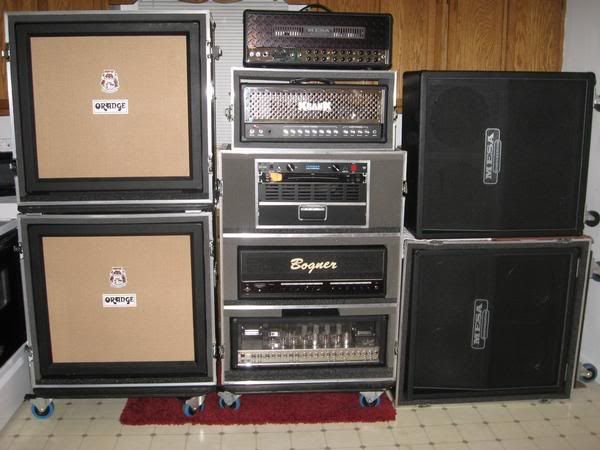I have owned both amplifiers and I honestly didn't keep the Uber (Rev. 2) for very long... I bought it from a friend because he gave me killer deal, ($1000) it was too good to pass up. I had always heard talk about how great they were and that they "had a metal tone that any other amp would only dream of touching." But based on the You Tube videos I saw I wasn't terribly impressed, but I went along with it anyways. I think that it was so hyped up that when I bought it and tried it out I was pretty underwhelmed. Don't get me wrong, it sound great, but I don't feel it lived up to the hype. Keep in mind I have always been a Mesa Guru both on guitar and bass (I've owned a BigBlock 750, M2000, Powerhouse 1000 cab, Nomad 100, Triple Rec, and now the ED) and I have determined that I'll never truly be happy with another company, I love the care and creativity behind their products that are often absent from other companies. The main thing that "erked" me was the Uber emphasized some higher pitched overtone frequencies that I never seem to be able to EQ out, even on different cabs. So after all was said and done I owned it for a few months before selling it to my friend who plays in the band Memphis May Fire, it's the perfect amp in his opinion. So take my opinion for what it's worth, another man's trash is another's treasure.
Now on to the Triple Rectifier. It's a great amp that I will always appreciate, it wasn't necessarily "my" amp of choice, but it's great in its own right. I bought it when I was a Junior in High-school because it was the amp all my favorite bands were using at the time and I liked their sound. I didn't know much about tone at the time, so I bought it using the following logic: "obviously if they use it and sound good, so will I." This was only half true. The Triple Rec is an amp you must "create a relationship" with unlike, say a 5150/6505. It's often given a bad name because so many people simply don't take time to learn how it functions as an instrument and ignore the fact it reacts VERY differently with every guitar. You have to compensate those differences by properly using the eq, otherwise it will sound horrible. Moving one knob a hair can totally alter your sound. I found that setting the eq at :Treble: 1:00, Mids: 2:00, Bass 12:00, Gain: 2:00, and Presence at 12:00 on the vintage setting was a safe place to start and tweak from there. Doing that I was really happy with the results, (at the time I played an LTD H-1000 with a Dimarzio X2N in the bridge as a reference). Remember to always focus on it's sound and not how the eq looks or what setting you use. Just because you play Metal doesn't mean you need to use the Modern setting. I eventually sold it because I got a solid gig playing bass and needed to get Mesa Bass gear. :wink: 6 years later I'm back on guitar.
All that to say... my recommendation is stick with the Tri Rec and continually work with the eq, it can take months (years for some) to finally adapt it how it functions. Chances are you'll eventually find the sound you're looking for. If you want to maintain clarity use the gain very conservatively, only use as much as you need, going over board can really muddy things up. If you mainly use the Modern setting try out the vintage or even raw and boost the eq. My favorite high gain settings were found in those two settings, (especially from a clarity/articulation stand point) not Modern. Now I'm back on guitar and I was perfectly happy with my ED until Mesa unveiled the RA-100 :? A few months from now I may have to make another Mesa investment.

Now about the Sonic Maximizer, at one point I loved it, now as my tastes have changed I feel it sounds better without it. the Recto naturally has a "scooped" sound and doesn't really need anymore assistance in that area IMO.
+ 1 on the Maxon, if you want to tighten up your sound it's definitely worth trying.
Hope my rambling helps some.
Kalen























